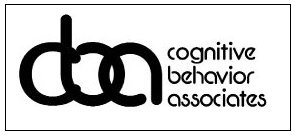What is Generalized Anxiety Disorder (GAD)?
Experiencing anxiety is a normal part of life. Most adults worry about things like health, money, or family problems. But people with Generalized Anxiety Disorder (GAD) feel very anxious about these and other things- even when there is little or no reason to worry about them. This worry becomes so excessive that the person often finds it challenging to stay focused and complete daily tasks. Generalized Anxiety Disorder (GAD) is diagnosed when:
- Excessive worry and anxiety occur for more than half the time for at least six months. The person worries about a variety of events or activities, such as work or school performance.
- The person finds it difficult to control the worry.
- The anxiety is associated with three or more of the following symptoms:
- Restlessness
- Difficulty concentrating
- Feeling easily fatigued
- Irritability
- Muscle tension (headaches, stomach aches)
- Sleep disturbance
- The worry, anxiety, or physical symptoms cause clinically significant distress or impairment in areas of functioning, such as with friends or at work.
- Symptoms are not due to the effects of a substance (e.g., a drug of abuse, medication) or another medical condition.
- Another mental disorder does not better explain symptoms.
GAD: A Prevalent Disorder
GAD is one of the most prevalent disorders in the US adult population:
- An estimated 5.7% of US adults experience Generalized Anxiety Disorder at some point in their lives (National Comorbidity Survey, 2007).
- GAD is about twice as common in females as in males (National Comorbidity Survey, 2007).
- Adolescents are also known to experience GAD at a rate of 2.2% and often worry about school or sports performance or catastrophes, such as earthquakes.
- GAD often co-occurs with other mental health disorders, including depression (66% of individuals with GAD also have depression), panic attacks, and alcohol abuse (Kessler et al., 1994).
There are both biological (e.g., genetics, activity in some areas of the brain) and environmental (e.g., stress, history of trauma) factors that seem to cause GAD. Because symptoms of anxiety, fear, and panic are present in many other psychological disorders, it is crucial to get an accurate diagnosis from a mental health professional.
Generalized Anxiety Disorder Treatment
Cognitive Behavior Therapy (CBT) for GAD has been practiced and studied for decades. In comparison to supportive counseling or no treatment, individuals who complete CBT show significant improvements in symptoms of anxiety and depression (Norton & Price, 2007). Given the strength of the evidence favoring CBT for GAD, it is considered the "gold standard" treatment. Research has found that symptoms of GAD are maintained by a cycle of ruminative worry and behavioral avoidance. Therefore, CBT for GAD focuses on developing helpful thinking styles and approaching safe situations to break the cycle of anxiety. CBT therapists also often teach breathing exercises to help reduce tension and improve focus.
Mindfulness meditation is emerging as a helpful addition to CBT and other behaviorally-focused psychological treatments (e.g., Acceptance and Commitment Therapy; ACT). Mindfulness training teaches individuals to increase awareness of present-moment experiences. Mindfulness is becoming aware of thoughts, emotions, and bodily sensations with a gentle, non-judgmental attitude. Mindfulness meditation is not equivalent to Buddhist practice. Instead, it is a secular practice for the training and clarification of attention, awareness, compassion, and wisdom.
In a review of 39 studies, mindfulness-based therapy significantly improved symptoms of GAD, depression, and other conditions (Hofmann et al., 2010; Journal of Consulting and Clinical Psychology). When compared to learning general stress management techniques, mindful meditation was better at reducing anxiety and worry (Hoge et al., 2013; JAMA Internal Medicine). Depending on the client's needs, mindfulness can be added to traditional CBT or can be the focus of therapy. Mindfulness-Based Stress Reduction (MBSR) is a relatively short (8-week) intensive program for learning mindfulness. Research shows MBSR is beneficial for anxiety and panic attacks, in addition to medical diagnoses such as chronic pain conditions (Hofmann et al., 2010).
Whether you're learning mindfulness as an addition to CBT or in an immersive program like MBSR, it is important to remember that mindfulness meditation is a skill we cultivate. Meditating can be like running: if you haven't gone on a run in 10 years, it's normal that your first few times out will be challenging and maybe a bit awkward. A CBT therapist can help you set reasonable goals for mindfulness and make adjustments as needed.
Click here for more info on the National Institute of Mental Health's website.

